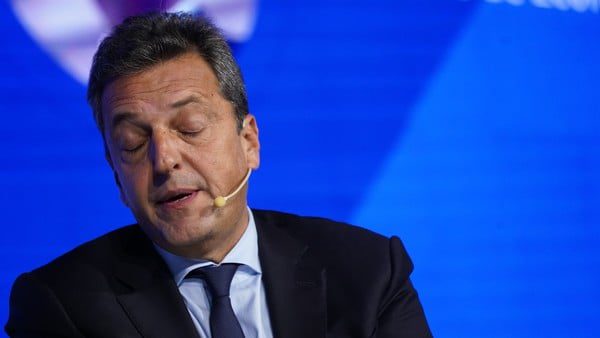Global Courant 2023-05-20 19:09:03
SUBSCRIBERS EXCLUSIVE
The search for coverage accelerates before the elections and the unknown is whether there will be political prudence to maintain a certain framework of stability until October.
It had been eight months since the Central Bank had not directly assisted the Treasury to cover the deficit. This month it already issued $450,000 million in this way.
Last year the Central Bank had earned US$6 billion in reserves, this year it is losing US$10 billion and the drought hit the balance of the external sector is very strong.
In recent weeks, economists dusted off the reports on the situation prior to the hyperinflation of 1989 during the government of Ricardo Alfonsín, looking for parameters.
In a report from October last year, the economist Marina Dal Poggetto marked the difference that now the starting inflation story is much lower: “For the first time in 2022 inflation would border triple digits, while in 1989 you came from 14 years with inflation that in just two years was below three digits” and indexation was widespread.
History also shows that the primary fiscal deficit in 1989 was 12 points of GDP and now is around 4.5%, that the monetization of those years was much higher and with a political fact to consider: in 1989 radicalism and Peronism was opposition.
Faced with distinctive facts, a common denominator is that of the economy with many pesos and few, very few, dollars in the reserves of the Central Bank.
Minister Sergio Massa’s series of announcements last week did little to change the financial climate, but it calmed down a market expectant of politics by lowering Vice President Cristina Kirchner’s possible candidacy and the possibility of the arrival of dollars from the Monetary Fund. International.
In Economy they are clearer than ever that without the money from the IMF the margins of action on the exchange market will be significantly reduced, but the negotiation with the organization still appears in a gaseous state.
Those close to the minister know perfectly well that neither the use of the US$ 5,000 million of the China Swap to pay for imports from that country, nor an equivalent that could arrive from Brazil, would be enough to supply a market with an appetite for exchange rate coverage.
In June, US$2,000 million would arrive from the IMF that are part of the disbursements to pay the agency and the Government aspires to another US$10,000 million that expires this year with the additional request that it be released from having to pay US$4,900 million.
The dilemma facing the IMF for Minister Massa and possible candidate is enormous.
As minister, he will maintain the negotiation based, as up to now, on the blow of the drought on exports and tax collection and on the fact that the soaring inflation of March, April and May would liquefy retirements and salaries and, therefore, public spending on actual terms.
The bottleneck continues to lie in the use of the dollars that the Fund can disburse. One point of friction is the traditional claim for some exchange rate jump and the other, which has gained relevance these days, is the intervention of the Central in financial dollars.
Economists with experience in currency runs are convinced (and support) that the current government will not be able to abandon interventions now or until the elections and, therefore, the key will be to define a scheme that alleviates the recessive blow of closing even more the payment of imports.
Inside and outside the government it is accepted that a stable dollar is the fundamental piece to think about stabilizing prices. After the shock of 8.4% in the increase in the cost of living in April, the concern of analysts is that it will not reach double digits in May.
Currently, there are no less than 11 different exchange rates in force (official, Mep, CCL, card, savings, blue, etc.) the postponement in the payment of imports is around US$ 12,400 million and the Government encourages companies to pay debts with their own dollars so that they do not demand foreign currency at the official price.
The drought hit the external sector with a loss of US$ 20,000 million that could partially be reversed only in the first quarter of next year.
The path to travel is long, narrow and all economic agents are aware of the difficulties. Will there be political prudence to maintain the suspension bridge until the elections within a framework that resembles something of a situation of certain stability?








